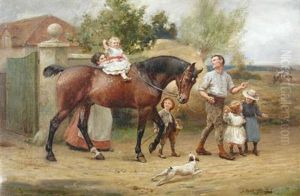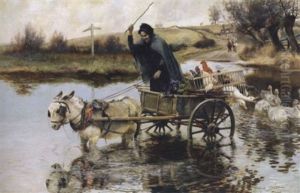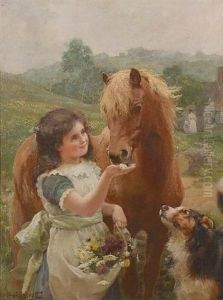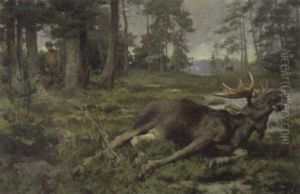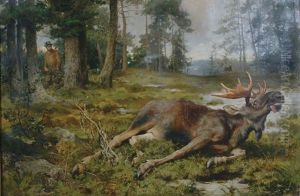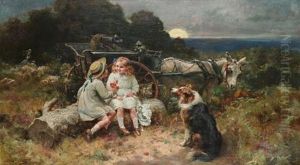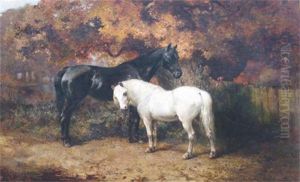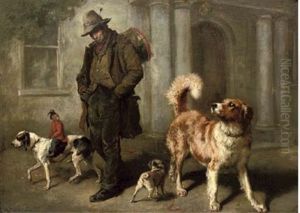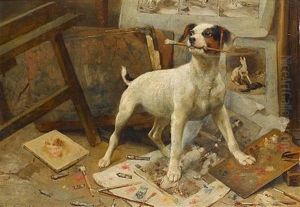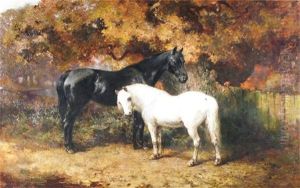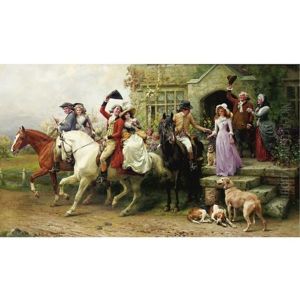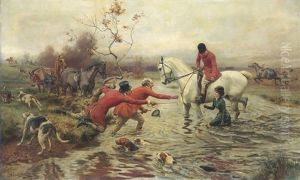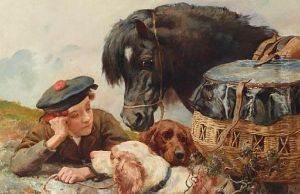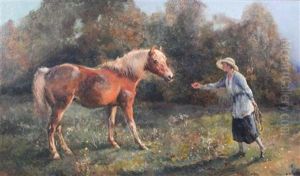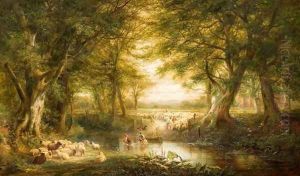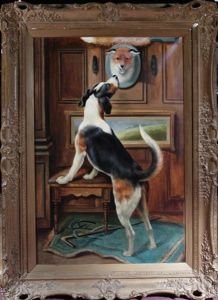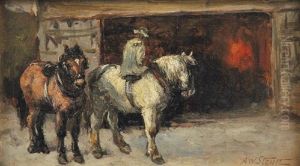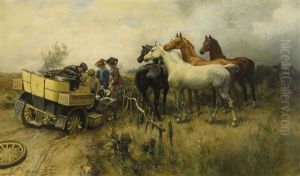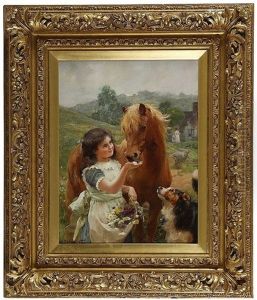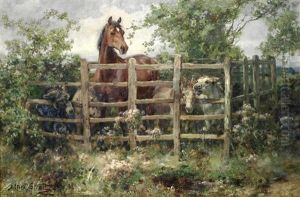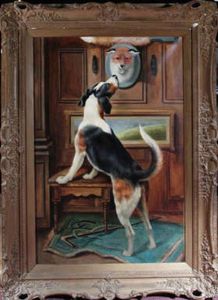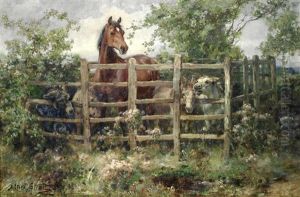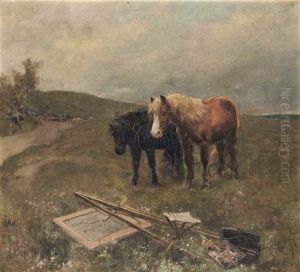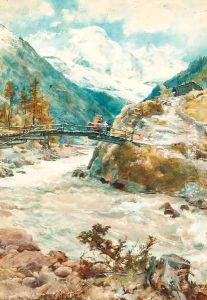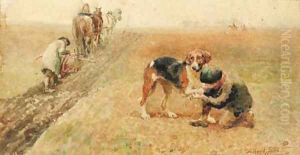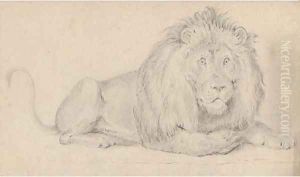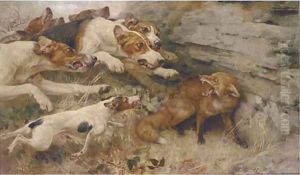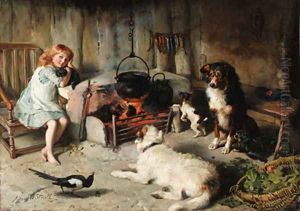Alfred William Strutt Paintings
Alfred William Strutt, born in 1856 in Springfield, Essex, England, was a notable British artist who came from a lineage rich in artistic talent. His father, William Thomas Strutt, and grandfather, William Strutt, were both distinguished artists, ensuring that Alfred grew up in an environment steeped in artistic tradition and skill. This familial background played a crucial role in shaping his artistic journey, providing him with the foundation and inspiration to develop his own unique style.
Strutt's artistic career was characterized by his remarkable versatility and proficiency in depicting a wide range of subjects, including genre scenes, animal studies, and historical events. He was especially acclaimed for his ability to capture the essence and dynamics of animal life, which became a significant part of his artistic identity. His work often reflected a detailed observation of nature and a deep appreciation for the rural life, themes that resonated with the Victorian public and earned him a reputable status among his contemporaries.
Educated in the arts from a young age, Strutt developed his skills under the guidance of his father and through formal art education. He exhibited his work at prestigious venues such as the Royal Academy and the Royal Society of British Artists, which helped to establish his reputation within the British art scene. Throughout his career, Strutt remained committed to his artistic vision, continually refining his technique and exploring new subjects that captured his interest.
Alfred William Strutt passed away in 1924, leaving behind a legacy that was deeply rooted in the British tradition of animal and genre painting. His contributions to the art world were not only a reflection of his personal talent and creativity but also a continuation of the artistic heritage of the Strutt family. Today, his works are cherished for their historical value and their ability to capture the beauty and complexity of the natural world.
